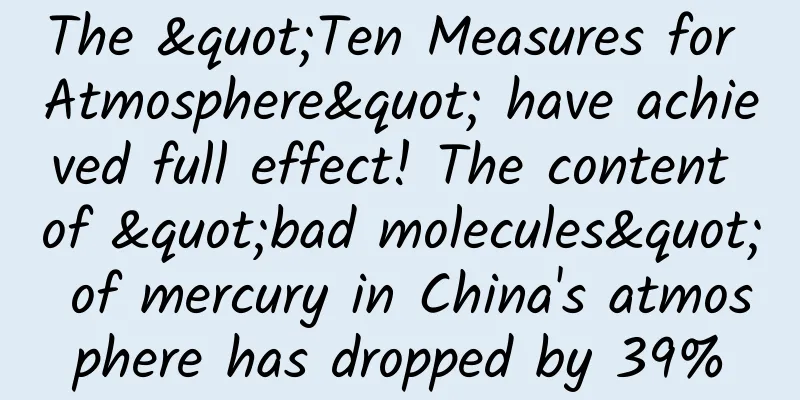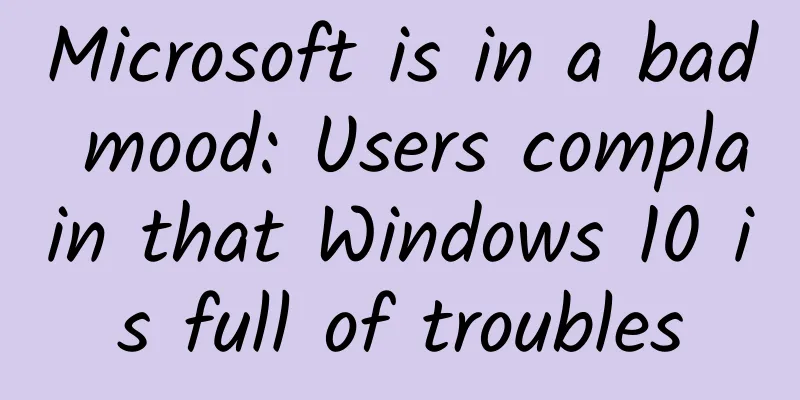The "Ten Measures for Atmosphere" have achieved full effect! The content of "bad molecules" of mercury in China's atmosphere has dropped by 39%

|
Since the implementation of the Air Pollution Prevention and Control Action Plan (hereinafter referred to as the "Air Ten Measures") in September 2013, China's anthropogenic air pollutant emissions have been effectively controlled, and the concentrations of conventional air pollutants have dropped significantly. Mercury is a global atmospheric heavy metal pollutant that can be transported across borders. Due to the lack of reliable observational data, the long-term trend of mercury concentrations and anthropogenic emissions in China is still unclear. Recently, Feng Xinbin and Fu Xuewu, researchers from the Institute of Geochemistry, Chinese Academy of Sciences, together with researchers from home and abroad, published a research paper in National Science Review. Based on the long-term continuous observation data of atmospheric mercury in China and other background areas in the Northern Hemisphere, they analyzed the changing trends and driving factors of atmospheric mercury in China in the past 15 years, and estimated the reduction in atmospheric mercury emissions from anthropogenic sources in China since the implementation of the "Ten Measures for Air Pollution Control". In the study, researchers: Revealing the long-term trend of atmospheric mercury concentration in China Based on long-term continuous observation data, it is found that the atmospheric mercury concentration in China showed an upward and downward trend before and after the implementation of the "Ten Measures for Air Pollution Control" in 2013, and the atmospheric mercury concentration in China decreased by 38.6%±12.7% from 2013 to 2022, which is about 4 times the decrease in other northern hemisphere background areas during the same period (5.7-13.5%) (Figure 1). The average atmospheric mercury concentration in China's background area in 2022 was 1.48 ng m-3, which is basically consistent with the average concentration in other northern hemisphere background areas. Figure 1. Trends in atmospheric mercury and other pollutant concentrations in China since 2008. (A) Comparison of atmospheric mercury concentration trends in China and other regions in the Northern Hemisphere; (B) Trends in atmospheric conventional pollutant concentrations and anthropogenic mercury emissions in China It was found that the reduction of anthropogenic emissions was an important factor driving the decline in mercury concentration in China's atmosphere Based on the source-sink relationship model, it is clear that anthropogenic mercury emissions are the key factor affecting the change of atmospheric mercury concentration in China's background area (Figure 2), and it is found that the change trend and amplitude of atmospheric mercury concentration in China since 2008 are basically consistent with the concentration of conventional atmospheric pollutants (Figure 1). Combining the correlation analysis of variables such as global atmospheric mercury background, plant absorption, surface mercury re-release and atmospheric chemistry, the authors prove that the implementation of the "Ten Measures for the Atmosphere" has achieved a coordinated reduction of atmospheric mercury emissions from anthropogenic sources and is an important factor driving a significant decrease in atmospheric mercury concentration in China. Figure 2. Impact of anthropogenic mercury emissions on changes in regional atmospheric mercury concentrations. (A) Qinghai Waliguan Global Atmospheric Reference Station; (B) Jilin Changbai Mountain Regional Atmospheric Background Station; (C) Yunnan Ailao Mountain Regional Atmospheric Background Station; (D) Zhejiang Dameishan Regional Atmospheric Background Station Estimated reduction in atmospheric mercury emissions from anthropogenic sources in China since 2013 Using the deep learning research method of convolutional neural network (CNN), the quantitative relationship between anthropogenic mercury emissions and atmospheric mercury concentration changes was determined. Based on machine learning and empirical formula models, the temporal and spatial changes of anthropogenic mercury emissions in China since the implementation of the "Ten Measures for Air Pollution Control" were estimated. From 2013 to 2022, China's anthropogenic atmospheric mercury emissions decreased by about 38-50%, with most of the reduction occurring from 2013 to 2019. The most significant reductions were in North China, Southwest China, and East China (Figure 3). Figure 3. Estimated spatiotemporal variation characteristics of China's anthropogenic atmospheric mercury emissions. (A) Annual variation characteristics of China's anthropogenic atmospheric mercury emissions since 2013 (with 2013 as the baseline); (B) Spatial distribution characteristics of changes in China's anthropogenic atmospheric mercury emissions from 2022 to 2013 The study shows that China's emission reduction actions have made an important contribution to the reduction of global atmospheric mercury emissions and are an important factor in the decline in atmospheric mercury concentrations in the Northern Hemisphere over the past decade. Traditional global mercury cycle models believe that anthropogenic emissions account for a small proportion of global atmospheric mercury emissions (~25%), but this study found that controlling anthropogenic emissions can effectively reduce atmospheric mercury concentrations, indicating that the impact of anthropogenic mercury emissions on the global atmospheric mercury cycle is much greater than traditional understanding. |
>>: Can this strange bronze "box" take us "directly" to the Shang Dynasty?
Recommend
Why is your APP not as good as others? Because you didn't make it "come alive"!
Many CPs are saying that my APP framework and con...
New media operation: graphic design, in-depth IP creation
For operational promotion, the most important thi...
Qin L and Haibao 06 have received a lot of orders. Who is more panicked, the three Japanese giants or domestic competitors?
How crazy can the orders for a car be? You know, ...
If you understand these 5 points, your live broadcast will sell out!
For a hundred years, there has been a famous &quo...
How can new brands break the curse of “explosion means peak performance”?
Nowadays, various new brands have emerged. Young ...
The temporary cooperation between the two parties expires tomorrow. Will Cainiao Fengchao cut off the data?
Due to the huge differences between the two parti...
Advertising and marketing creative poster collection
For every designer Posters are the most common an...
A guide to advertising in the education industry
Affected by the epidemic, holidays and working ti...
Heavy rain is coming! How to deal with and prevent the large-scale continuous heavy rainfall in South China?
In recent days, many parts of southern China have...
Zheng Xiangzhou Capital Positioning Strategy
Zheng Xiangzhou Capital Positioning Strategic Res...
If you don’t even understand the 10 principles of psychology, you are really not qualified to talk about marketing
With the rise of digital marketing , marketers mu...
Qingming Outing Season | Want to go outing and learn knowledge during the Qingming holiday? Why not go see the "Kidney of the Earth"?
Audit expert: Yang Yanhui Senior Landscape Engine...
Is Huaihua under lockdown in 2022? Can I still enter Huaihua now? Attached with the latest notice
Recently, new local outbreaks have occurred in ma...
On the way to spring, I saved the "world" by the way... What should I pay attention to when preventing car fires?
Recently, Suichang County, Lishui City, Zhejiang ...









